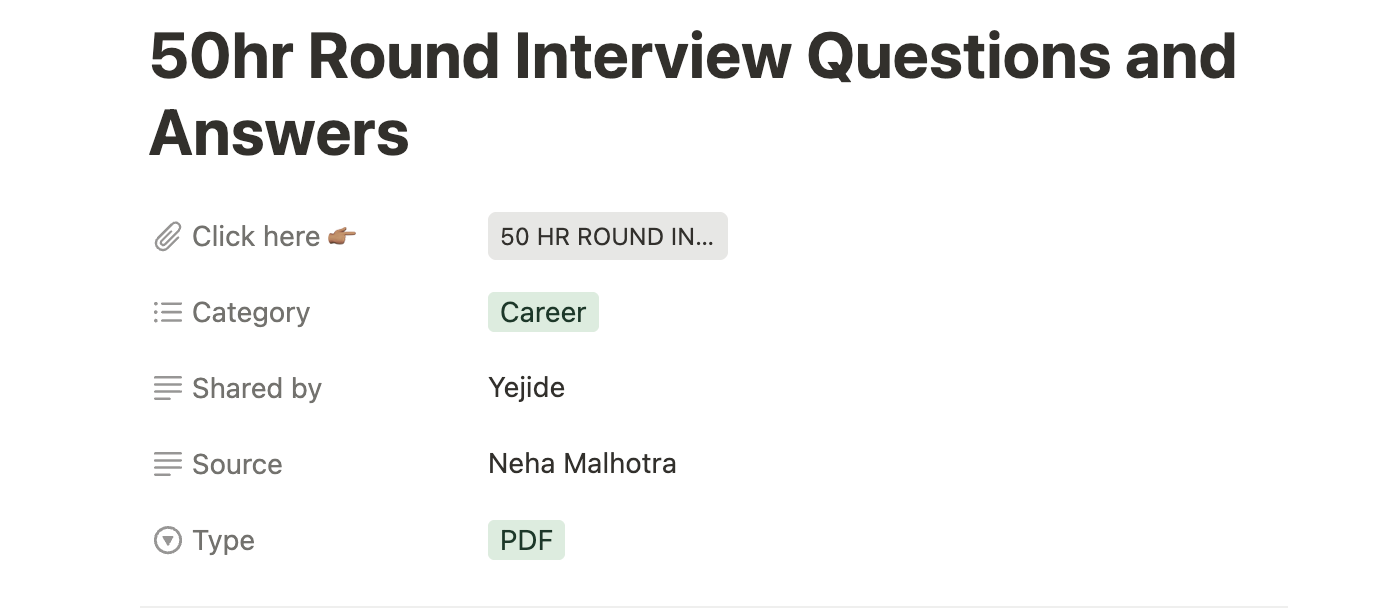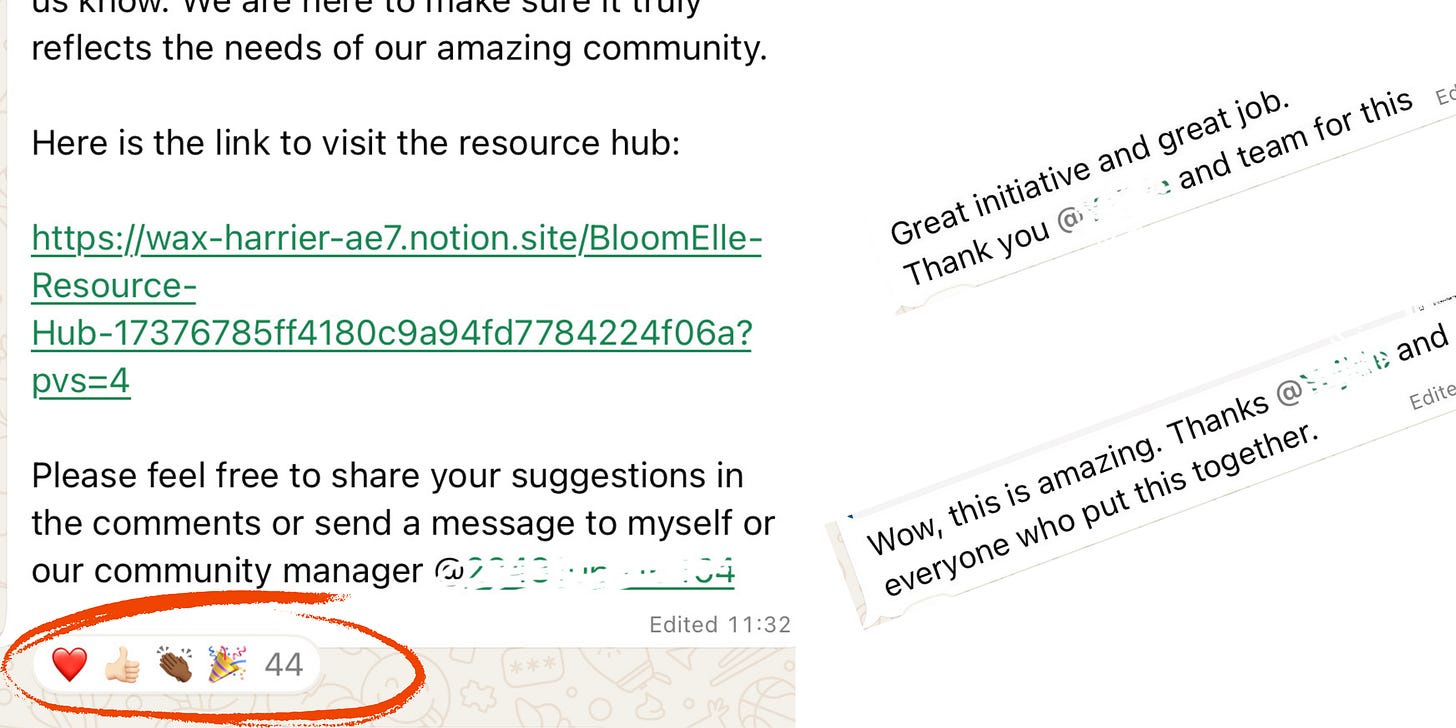How I Built a Community Resource Library
the tool, the details and the lessons…
One of the first things I noticed in my first 90 days on the job was how many great resources were being shared within the community. There was a good amount of resources being shared and recommended, but there wasn’t one place where some of the evergreen ones could live.
I noted this but waited for the right time to pitch a solution, as I was still settling in, and observing how things moved. About 30+ days in, I was asked to create a space where we could house our resources.
Choosing the Right Tool
Of course, next came the big question: where should the resources live?
I ran through a few tools like Google Sheets, Airtable, Confluence, and Notion, and here’s what I found:
Google Sheets was of course straightforward but the mobile experience was terrible, especially since the resources had to be linked to its source (where to buy/view/download)
For Confluence and Airtable, I sincerely can’t recall why they didn’t make the cut. Either the setup felt so much, or the vibe was close to Google Sheets.
I put my unhealthy relationship with Notion aside and gave it a go and something clicked. It was functional, mobile friendly, and yeah… aesthetic enough.
And with that, our Resource Hub was birthed.
side note: I’ve officially gone from a ‘Notion stresses my brain’ girlie to a Notion girlie. the tables tumbled! i use Notion for work purposes tho, my notes app still rules for my personal shenanigans.
How It Came Together
I needed the hub to be easy to use and nice to look at. So I browsed through Notion templates until I found one that matched what I had in mind, then I cleared out the extras and viola!
I went on to add properties like URL, category, who shared the resource, source, and the type of resource. The “shared by” property is easily one of my favourites because I like the idea of people seeing their name there. Like “hey, thank you for donating to our library.”
Another key property was the category. I started by gathering the resources that were already on ground and put them into buckets like career, business, family, etc. These buckets were made relevant to the needs of our community.
With all of that in place, I began to add the resources, categorized them, gave credits to members who shared them, and included the links and/or files to each resource. And it was ready!
The best part? Members loved it.
every month, I put out a reminder to the community about the hub because yeah it can be forgotten. also, we have new members every now and then, so they need to know too.

The Lessons
Start with what feels doable. I didn’t plan a mega launch, I just built something simple and useful.
Templates are guides. You don’t have to find a template that fit everything you need. Look for parts that work within a template and ditch the rest.
When building for a community, make it feel like one. The “shared by” property was my way of throwing that in. It made members feel seen; and you know how these little things can go a long way in influencing how people feel about your community. Always find that element no matter the tool you use.
Move from just sharing reminders to actually referencing the resource hub in conversations. So if someone needs help with something, you could go “we have this, this, this, on our resource hub. Check it out and see if it helps”.
So yeah, that’s it from me this time. I’ve got a few more behind the scenes stories I’m looking forward to sharing soon.
If you have any questions, need help putting systems together, or you’re in the middle of an operations dilemma, feel free reply to their email or send a message if we’re connected on LinkedIn.
Talk soon!






This is well put together💯. Thank you so much for sharing Martha🙌🙌
You just gave me an idea, thank you for sharing.